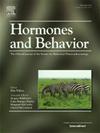先天性肾上腺增生或完全雄激素不敏感综合征女性的性别兴趣和行为
IF 2.4
3区 医学
Q2 BEHAVIORAL SCIENCES
引用次数: 0
摘要
先天性肾上腺增生症(CAH)和完全雄激素不敏感综合征(CAIS)患者的心理结果可能为理解典型的表现出性别差异的行为发展提供信息。在本研究中,我们调查了性别认同、友谊质量和职业选择。参与者为46xx例经典CAH (C-CAH;n = 29),非经典CAH (NC-CAH;n = 13),女性46,XY CAIS (n = 11),男性对照组(n = 147)和女性对照组(n = 142)。参与者完成了一份关于性别认同、友谊、(童年、青少年、成年时期朋友的性别)、友谊方式和职业的在线调查。结果表明:(1)女性对照组与男性对照组在大多数结果上存在差异。(2) CAIS女性和NC-CAH女性在大多数性别行为问题上的回答模式与女性对照组没有差异。(3) C-CAH女性和CAIS女性在友谊问卷上的反应与男性对照组相似。(4)患有C-CAH的女性从事的职业具有男性性别分布,而患有CAIS的女性从事的职业与女性和男性对照组的职业没有差异。(5)更严重的CAH形式与男性对照的反应模式更一致,而不太严重的CAH形式的女性则相反。本文章由计算机程序翻译,如有差异,请以英文原文为准。
Gendered interests and behavior in women with congenital adrenal hyperplasia or complete androgen insensitivity syndrome
Psychological outcomes in people with congenital adrenal hyperplasia (CAH) and complete androgen insensitivity syndrome (CAIS) may provide information contributing to the understanding of development of behaviors that typically show sex differences. In this study, we investigated gender identity, friendship quality and occupational choices. Participants were women with 46,XX classic CAH (C-CAH; n = 29), non-classic CAH (NC-CAH; n = 13), women with 46, XY CAIS (n = 11), male controls (n = 147) and female controls (n = 142). Participants completed an online survey with questions on gender identity, friendship, (sex of friends in childhood, adolescence, adulthood), friendship style, and occupation. Results showed that (1) female and male controls differed on most outcomes. (2) Women with CAIS and women with NC-CAH responded in a pattern not different from female controls on most questions regarding gendered behavior. (3) Women with C-CAH and women with CAIS responded more similarly to male controls than female controls on the friendship questionnaire. (4) Women with C-CAH worked in occupations with a male sex distribution whereas females with CAIS worked in occupations that were not different from those of female or male controls. (5) More severe forms of CAH were associated with a response pattern more in line with that of male controls, whereas the opposite was true for females with less severe forms of CAH.
求助全文
通过发布文献求助,成功后即可免费获取论文全文。
去求助
来源期刊

Hormones and Behavior
医学-行为科学
CiteScore
6.70
自引率
8.60%
发文量
139
审稿时长
91 days
期刊介绍:
Hormones and Behavior publishes original research articles, reviews and special issues concerning hormone-brain-behavior relationships, broadly defined. The journal''s scope ranges from laboratory and field studies concerning neuroendocrine as well as endocrine mechanisms controlling the development or adult expression of behavior to studies concerning the environmental control and evolutionary significance of hormone-behavior relationships. The journal welcomes studies conducted on species ranging from invertebrates to mammals, including humans.
 求助内容:
求助内容: 应助结果提醒方式:
应助结果提醒方式:


